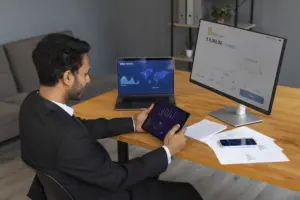One of the fundamental talents needed by every business analyst is effective communication. Since communication affects every crucial task throughout the project cycle, it is crucial for the success of any business analysis project. Planning, elicitation, requirements management and analysis, strategy, and solution evaluation are all fundamental components of business analysis.
A business analyst must have excellent facilitation abilities to manage stakeholder participation and engagements, which are all dependent on successful communication. Critical listening skills are a crucial component of developing communication abilities. The art of listening, as subtle and as passive as it may appear and frequently go unnoticed, prepares the way for the success or otherwise failure of any communication activity, which may eventually affect the outlook for the entire project. You may learn everything you need to know to become a competent business analyst online, thanks to an excellent business analysis certification course.
What is Active listening?
You must focus exclusively on the speaker in order to actively listen. This calls for the audience to be attentive to every word and to identify with the speaker. To do this, pay attention to the speaker and prod them to share more. It is the responsibility of the listener to gather knowledge and comprehend the speaker’s viewpoint, which is why it is important to provide them with chances to speak and think. For the time being, it is worthwhile to cut yourself off from the outside world.
Learning also includes listening. The adage “As long as you speak, you merely repeat what you already know” is paraphrased. You only have an opportunity to learn anything new when you listen. It’s critical to respect the speaker’s opinions and background, as well as their body language. You should convey comfort to the listener through your body language without speaking. It’s important to keep in mind that the listener’s goal should be to comprehend the speaker and not only to listen. It is worthwhile to summarise their arguments in response to that reason.
The most crucial thing is to listen without passing judgement. The listener should refrain from criticism and arguments and be receptive to new concepts, viewpoints, and opportunities. Avoid making any presumptions, don’t “sell” your viewpoint right away, and don’t give advice or a solution “by force.” It’s important to start by demonstrating that you are open-minded. It pays to be patient.
How can you develop effective listening skills?
- Keep your focus on the speaker.
Tell the speaker that you are paying attention. This is a crucial strategy for winning your stakeholders’ trust in addition to their attention. Distractions like email, side conversations, and visual clutter must be avoided if one is to pay attention. Instead, one must maintain attention on the stakeholder. As often as you might be tempted to succumb to a quick diversion, you risk missing an important discussion point or point that the stakeholder is trying to make.
- Utilise proper nonverbal communication.
It is generally accepted that just 7% of communication is verbal and 93% is nonverbal. In other words, your actions during communication are more important than your words. Do your spoken words and body language have the same meaning? While some of your nonverbal communication may be unintentional, you must make an active effort to make sure they align with the message you are attempting to get over to the speaker. Even if the opposite may be true, looking away, banging your finger on a desk, or laying your hand on your chin may convey to your stakeholder that you are not fully engaged in the conversation.
Engage in the deliberate and constructive use of body language in all conversations. Maintaining good eye contact and nodding frequently while doing this is an essential element in executing it successfully. This communicates to the stakeholder your interest in what they have to say and your readiness to offer the best solution for their problems.
- Provide confirmation.
By asking questions, you can demonstrate to your stakeholder that you are paying attention to them. By asking questions, you can make sure you are not overlooking any information and can also let the stakeholder know that you are.
If in doubt, you can open your clarifying queries with “Do you mean to say…?” “Can you explain this to me in more detail?” What is…, in your opinion?
Paraphrasing what the stakeholder said is another important technique to offer confirmation. This makes sure that you and the other(s) involved are on the same page as well as assists you in understanding the message in your own terms.
Starting a sentence with a phrase like “If I understand you….” or “Correct me if I’m wrong….” is a common way to paraphrase.
Do not cut the speaker short when giving confirmation. Give them time to finish speaking before continuing to ask questions or paraphrase.
ConclusionRespecting the other person’s communication needs is a prerequisite for effective listening. Your stakeholders must feel heard and taken seriously. This opens the door for fruitful stakeholder collaboration and contributes to the project’s eventual success. Check out the online business analysis training to find out more about business analysis.




























